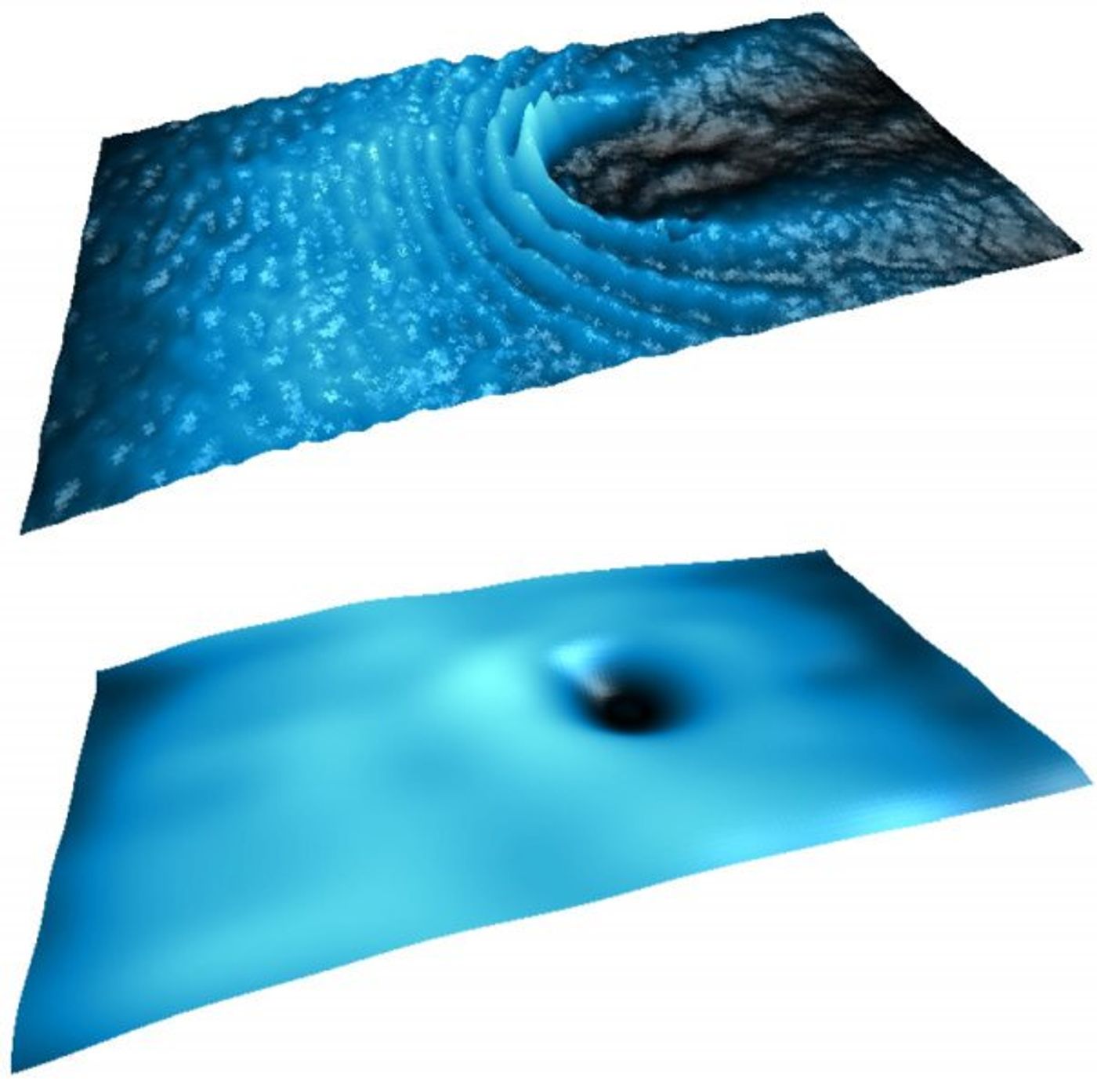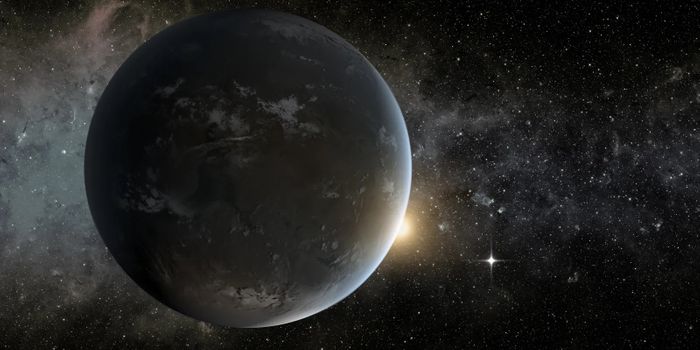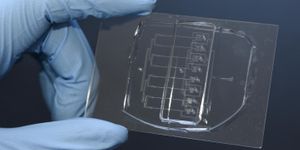Liquid Light Observed at Room Temperature for the First Time
Light can act like waves and particles, depending on the experiment you use to observe. It can also be turned into a liquid state in extreme condition such as at absolute zero degree environment. For the first time in history scientists managed to create so called “liquid light” at room temperature, making this strange phenomenon much easier to observe and explore.
The flow of polaritons encounters an obstacle in non-superfluid (upper) and superfluid (lower) state. Credit: Polytechnique Montreal
A joint team of Canadian and Italian scientists published their recent discovery in a Nature Physics paper. In the study they placed a 130-nanometer thin film of organic molecules between two ultra-reflective mirrors, and blasted it with a 35 femtosecond (that is 35 x 10-15 second) laser pulse. The photons are expected to bounces between the mirrors and across the non-conducting organic molecules to allow strong interaction by photons and electrons. The back and forth action lead to the formation of the hybrid light-matter fluid called polaritons.
The light-matter fluid belongs to a state of matter called superfluid, derived from the ability of particles to condense in a state known as a Bose-Einstein condensate. A superfluid has zero friction and viscosity. Unlike the regular light which can be blocked by object in its path, liquid light can actually flow around objects and corners without ripples. It is also known as the fifth state of matter, besides gas, liquid, solid, and plasma.
Related reading: Bose-Einstein condensate
The observation of liquid light under ambient conditions is expected to have large impact in quantum physics and create enormous potential for optic technology. “Not only to study fundamental phenomena related to Bose-Einstein condensates with table-top experiments, but also to conceive and design future photonic superfluid-based devices where losses are completely suppressed and new unexpected phenomena can be exploited,” the authors concluded in the article.
Source: Futurism/Nature Physics









